February 28th 2023
Duluth, Minnesota

Traveler: Chris Carrigan
Destination: Duluth, Minnesota
During a family trip to Duluth, Minnesota over Thanksgiving weekend, Chris visited the historic Congdon Estate, also known as Glensheen Mansion.
Located along the northern shore of Lake Superior, this remarkable early 20th century estate built between 1905-1908 is situated between two creeks. Chester and Clara Congdon, the original owners, engaged Minnesota architect Clarence H. Johnston to design the family home and called on landscape architect Charles W. Leavitt, out of New York, to design the grounds which originally consisted of 22 heavily wooded acres. Interior designer William A. French Company, out of St. Paul, rounded out the design team.
The design is certainly rooted in a Beaux-Arts style floor plan, and if not for geography, could have easily been considered an English countryside manor. The exterior and interior design draw from a unique blend of architectural styles including Edwardian, Arts and Crafts, and Colonial Revival. This blend of styles is what makes the house so fascinating and a treat to explore.
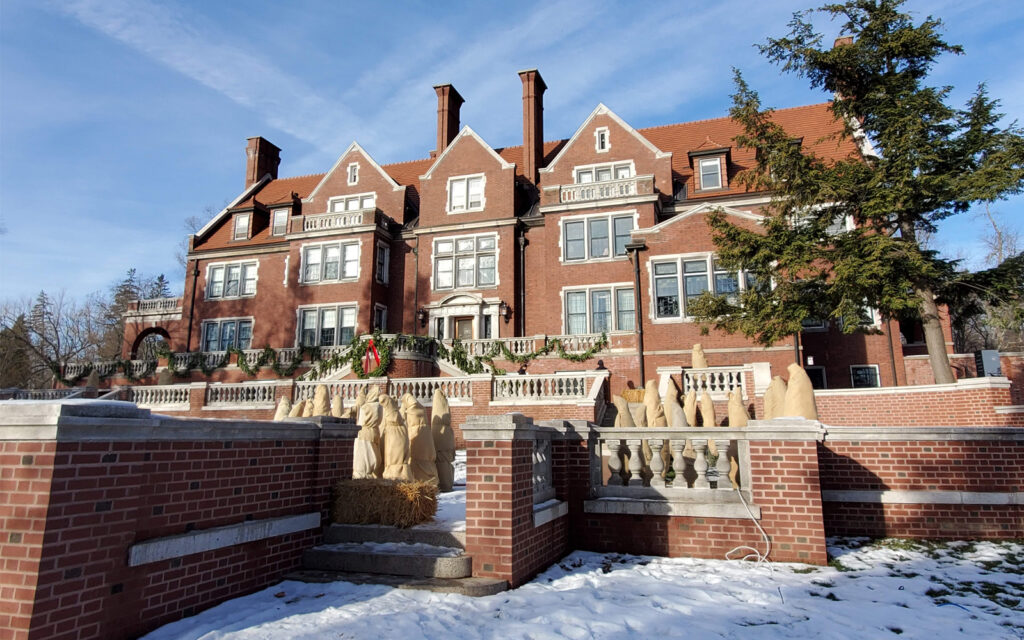
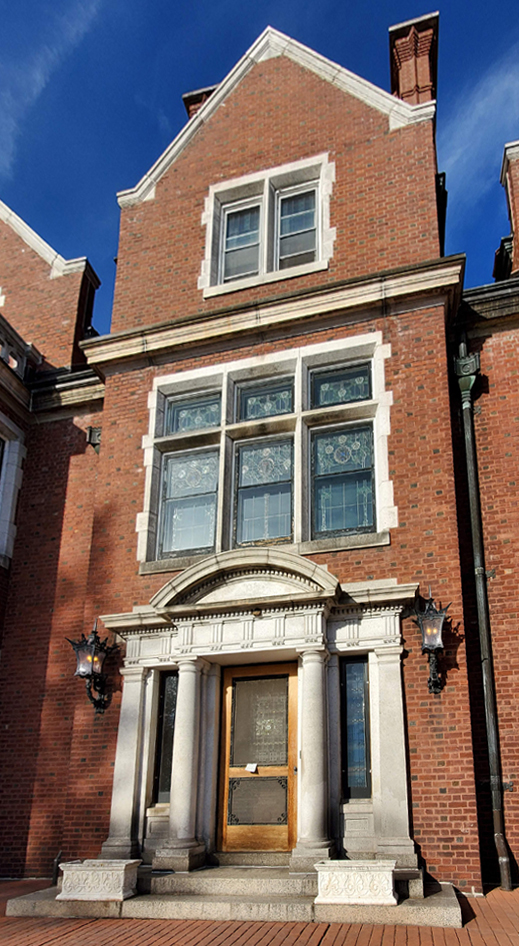
The rear elevation overlooks Lake Superior and provides the first impression for those arriving by boat, so it was no surprise that the rear door would be so elegantly detailed.
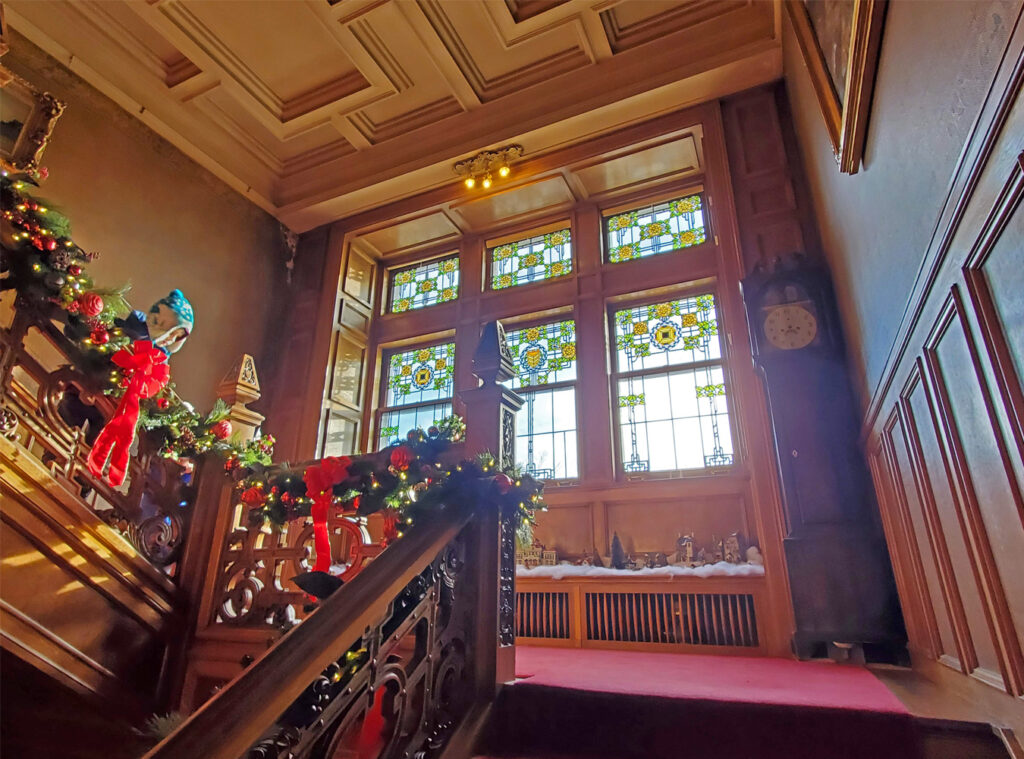

Whether you enter through the rear door or the front door, you are greeted with a grand stair hall that consists of intricate hand carved woodwork and elegant wainscot paneling made from fumed white oak.
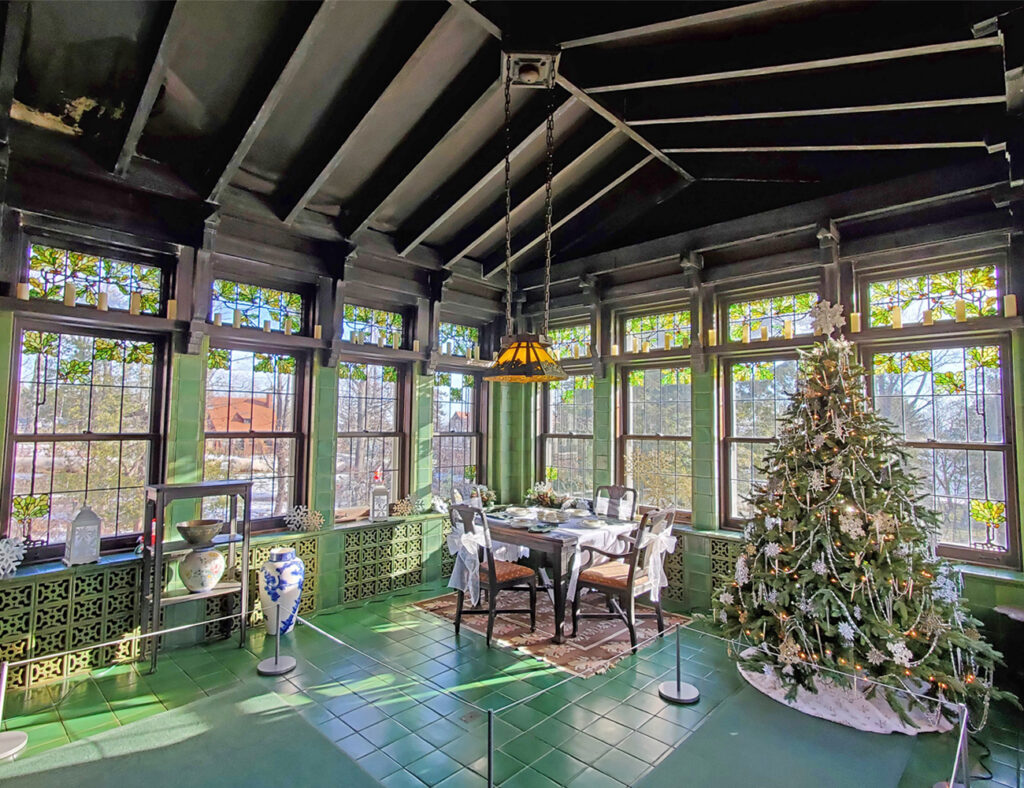
Overlooking the formal gardens and Lake Superior is the most popular room in the house. The Sunroom is adorned with oak leaf and acorn ornamental glass, green tile, and torched Japanese Cypress woodwork.

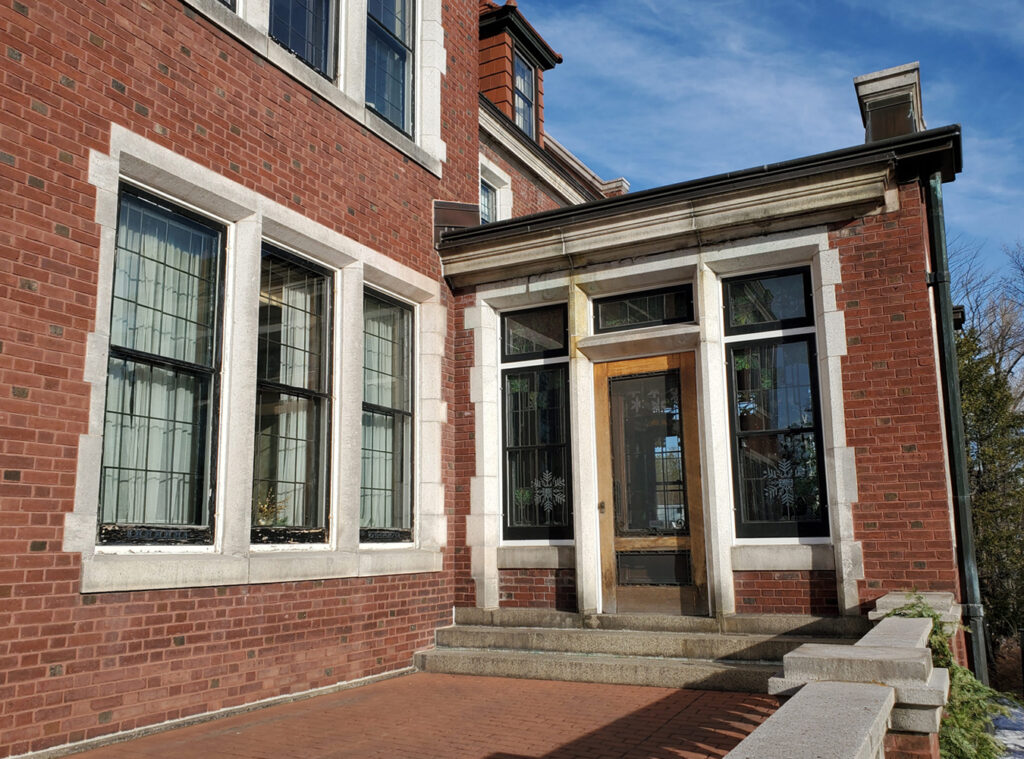
Just off the Sunroom is the Butler’s Pantry, fitted with a glass door and side lights so the butler could easily monitor activity within and anticipate when he would be needed. Another popular feature of the Sunroom was that it opened onto the rear terrace.
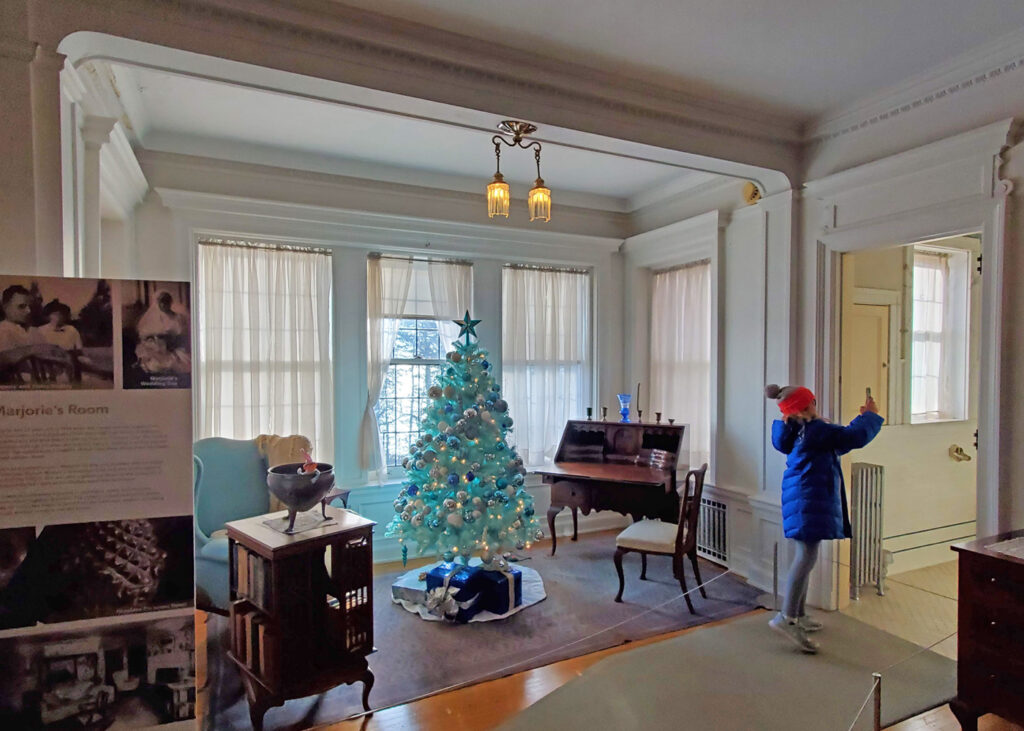
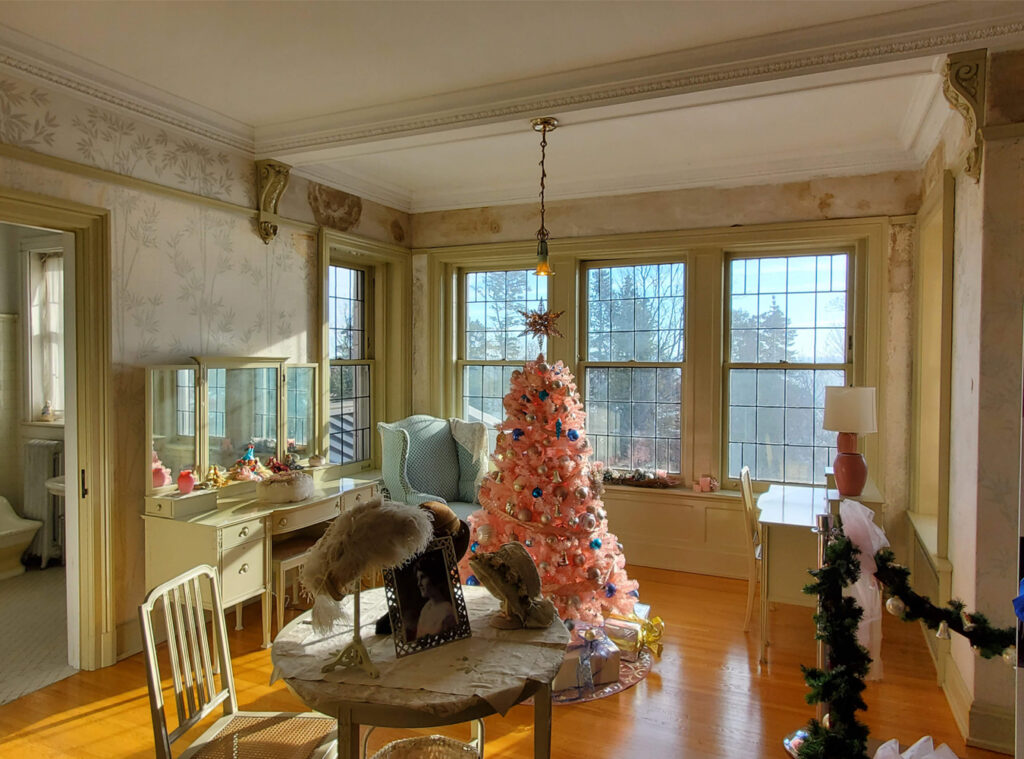
The second floor bedrooms each had a fireplace, as well as a large bay window to take advantage of the views and increase the natural light.
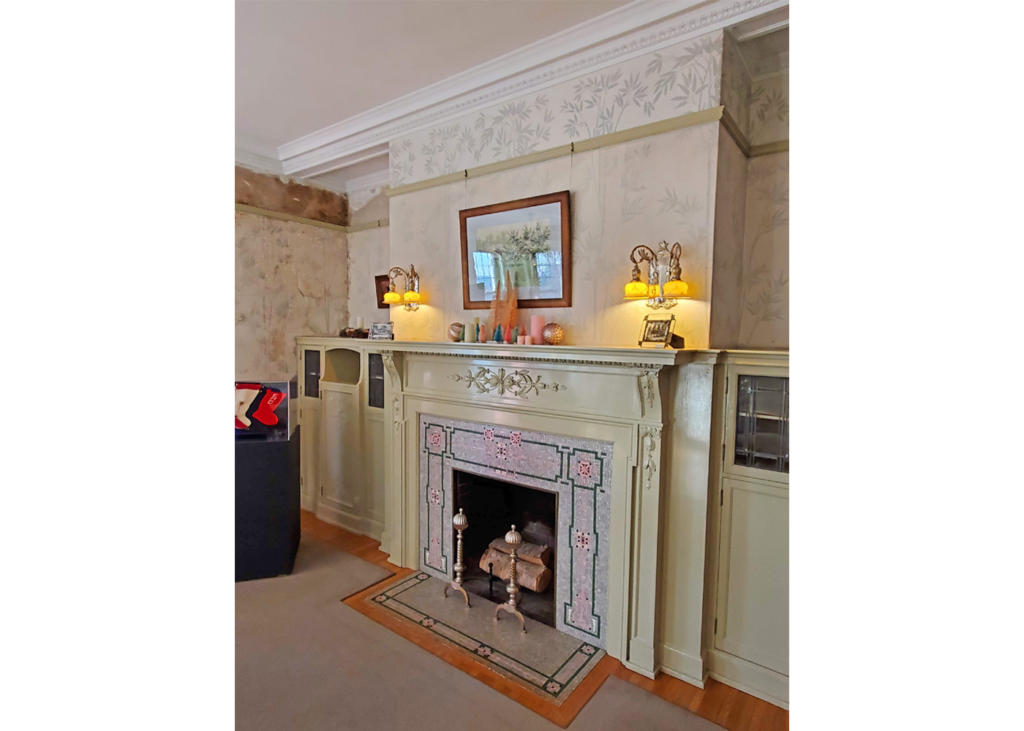
This bedroom fireplace is a great example of how the Colonial details are blended with the Arts and Crafts style cabinetry.
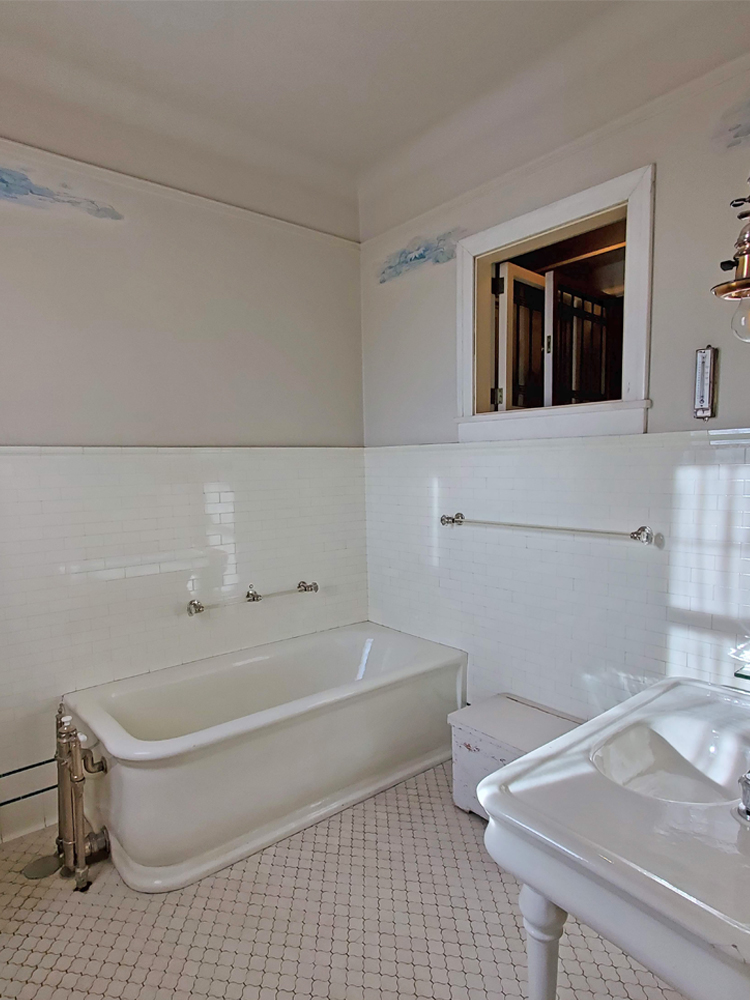
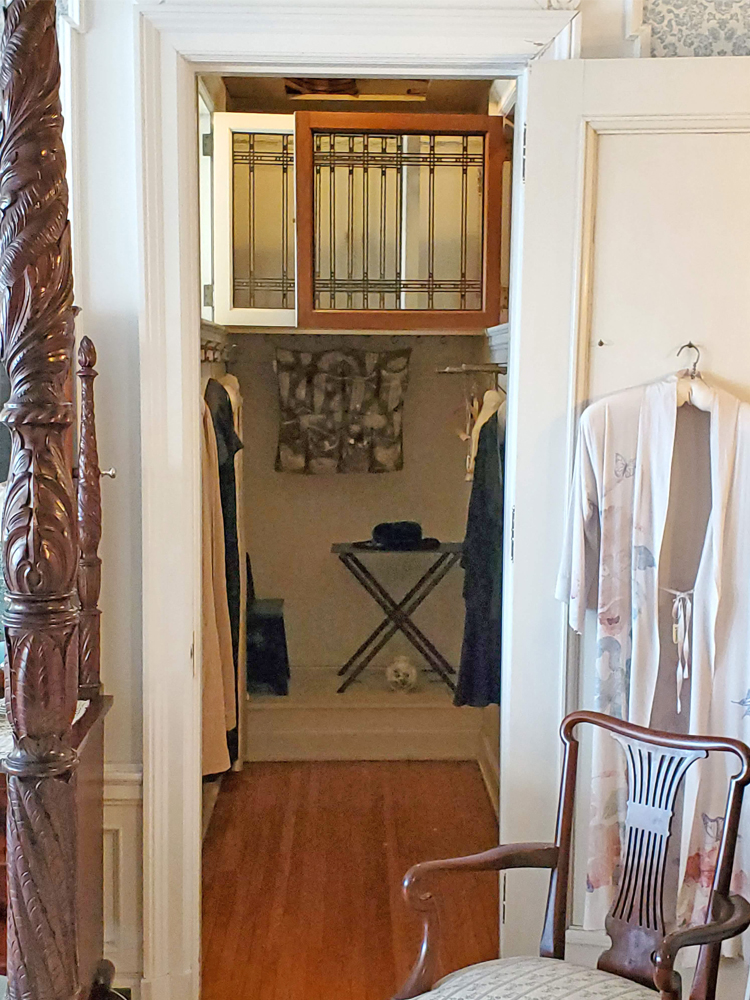
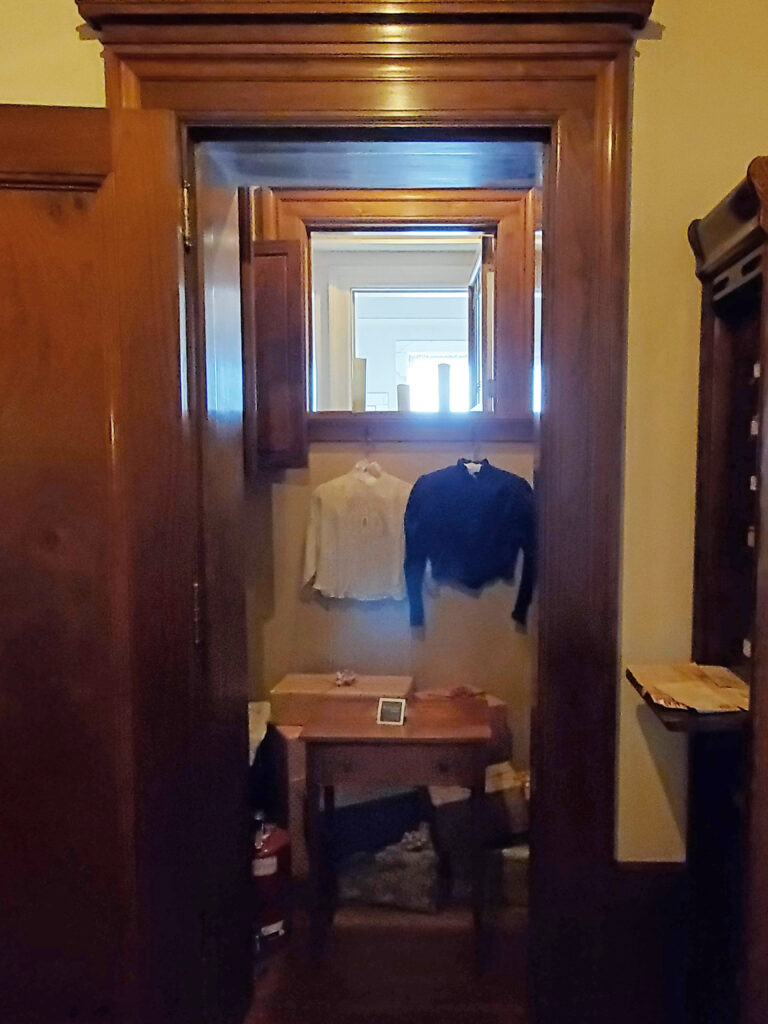
Among the interesting elements in the house, a set of operable high windows shared light and ventilation between the bathroom, closet, and interior second floor hall.

One of several accessory structures, the Gardener’s Cottage started off as a simpler 1.5 story mass. As the gardener’s family outgrew the house, the cottage was redesigned with a second story English Tudor expansion.
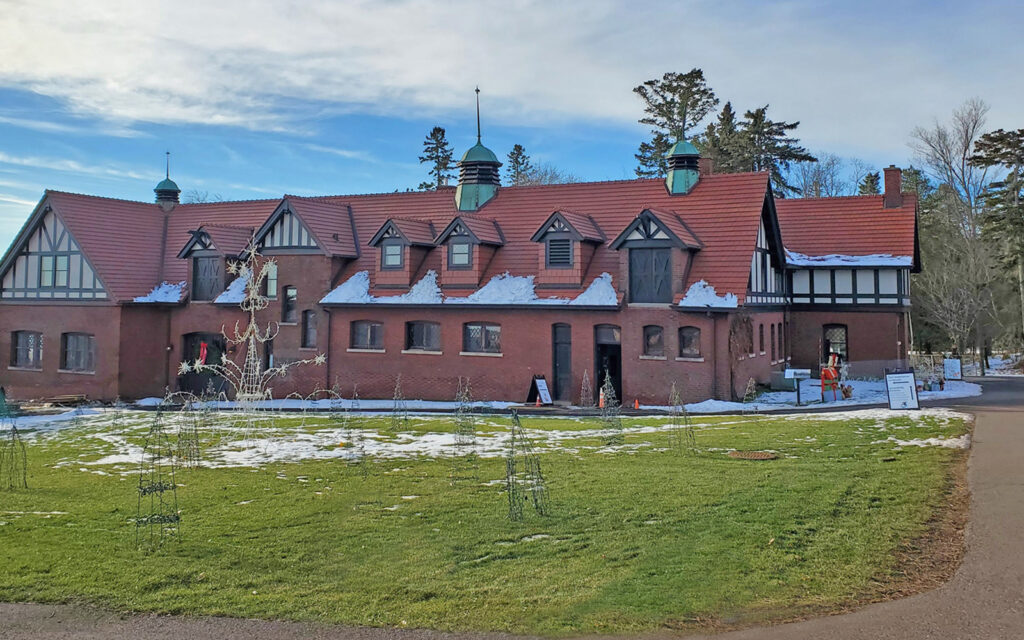
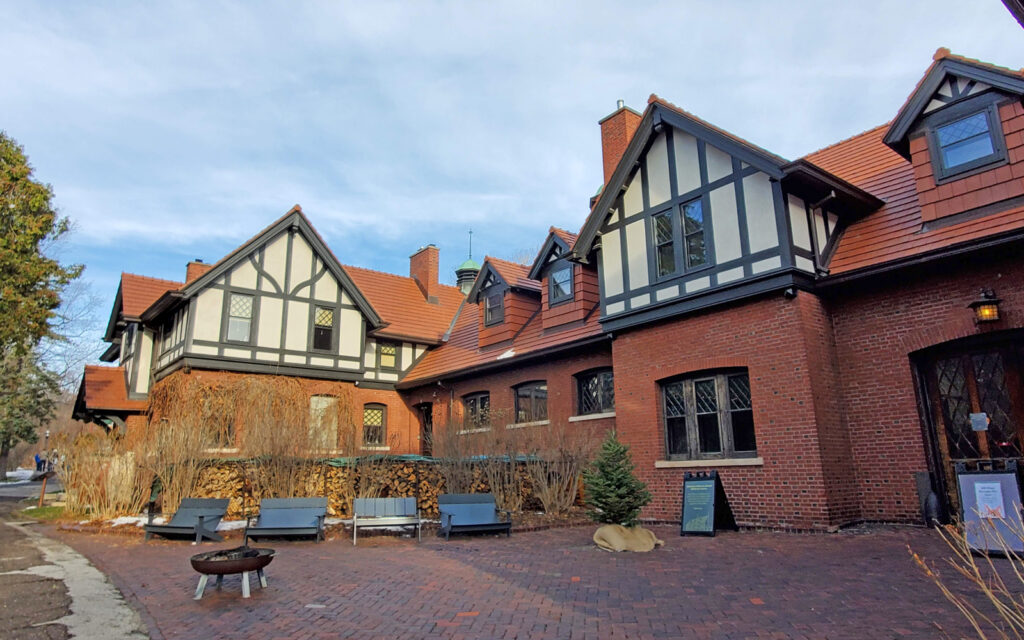
On one end, the Carriage House once housed cows, horses, carriages, and automobiles, with a full repair shop. The northern end contained living quarters for staff and the chauffeur.
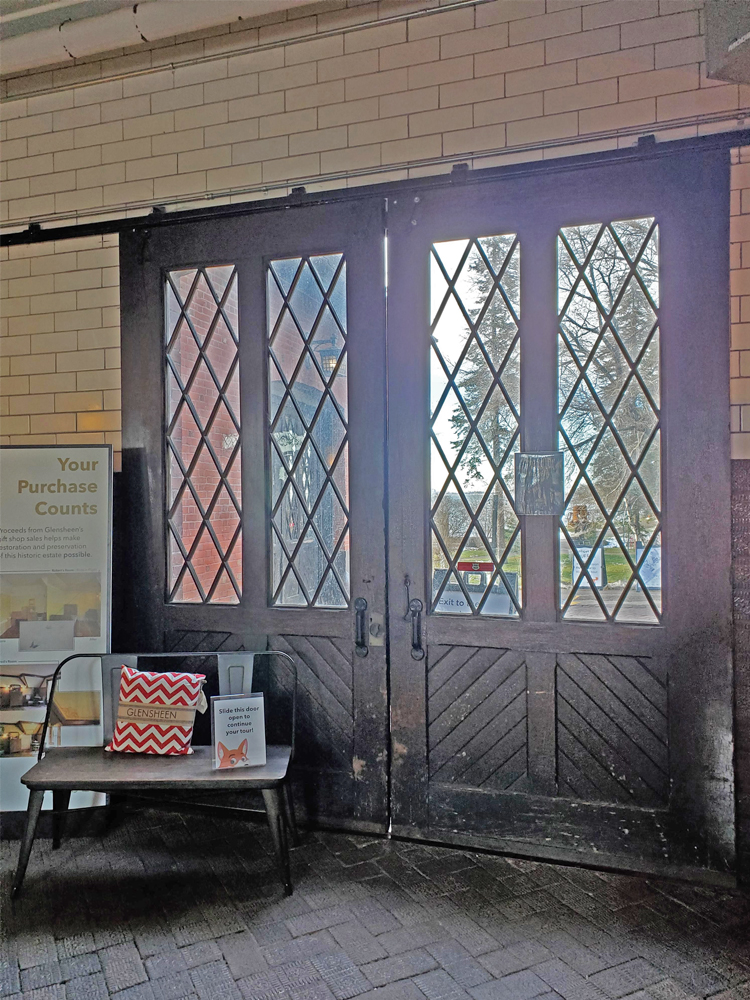
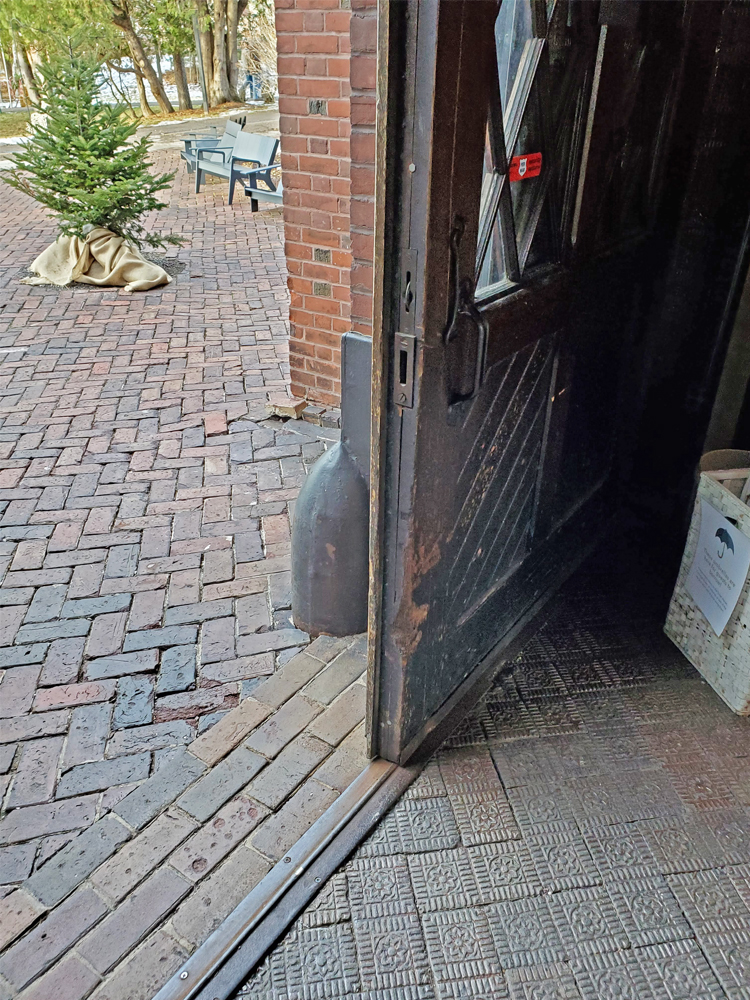
Hefty, sliding carriage doors utilized a bottom track to guide the doors which also serve as a waterstop on rainy days. Decorative tile floors are as functional as they are beautiful, providing a textured surface for the horses to walk on.
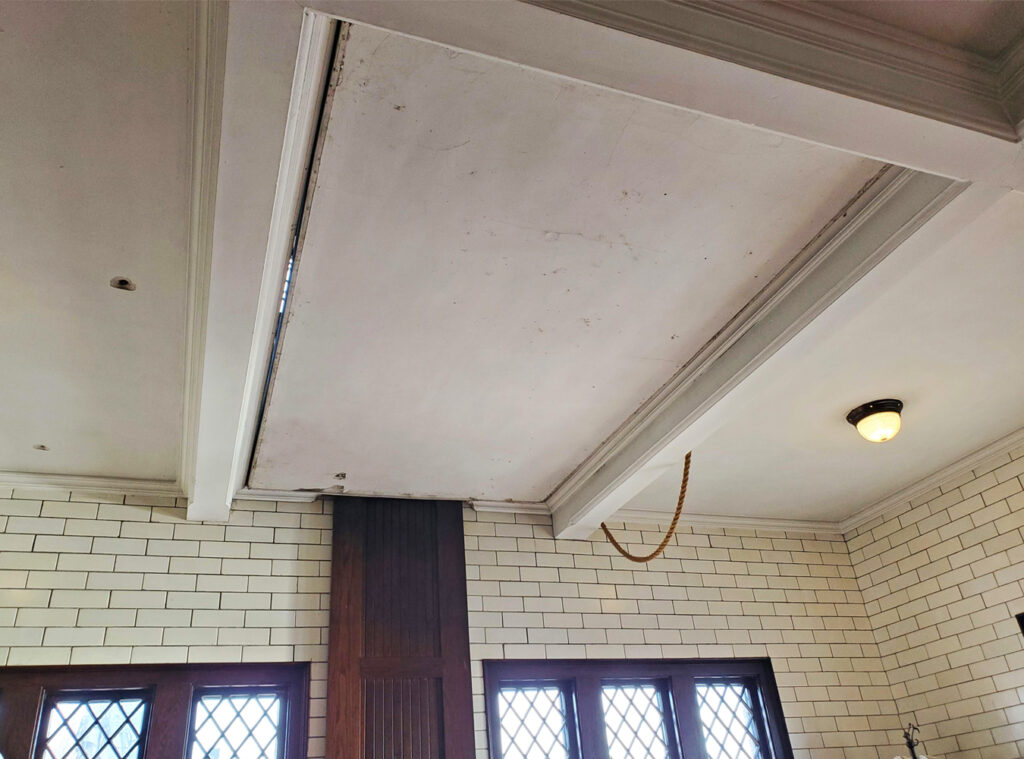
A large lift hidden in plain sight as a ceiling panel provided access to the attic to store additional carriages.
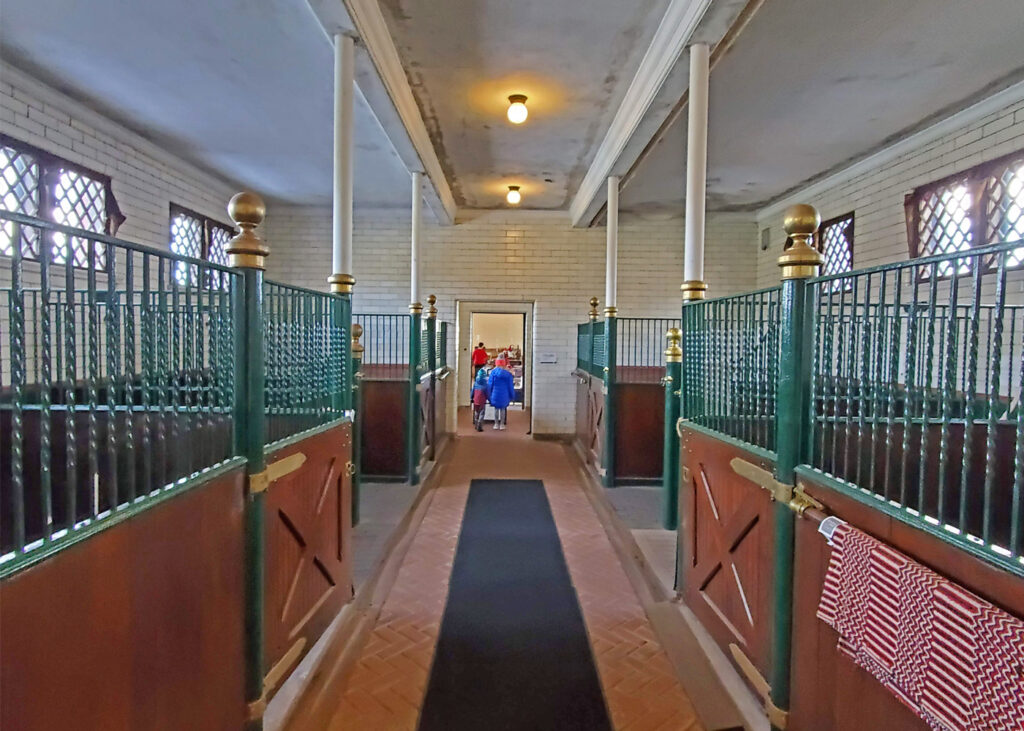
The horse stables are within the expansive Carriage House. The floors of the stanchions are made of cork tiles for the animal’s comfort.
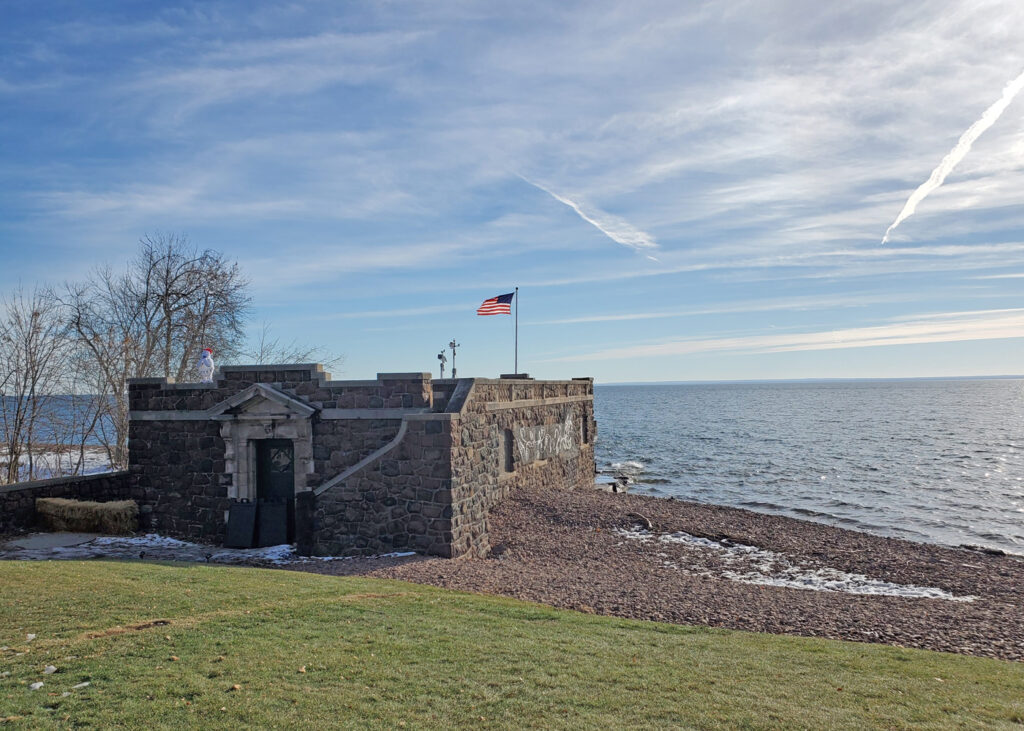
The Boat House, with brownstone walls sourced from a local quarry, anchors the end of a long stone pier. It served as storage for the Congdon’s sail boats and row boats. The rooftop patio, covered in terra cotta tile, provided a spot to play shuffleboard while awaiting incoming boaters.
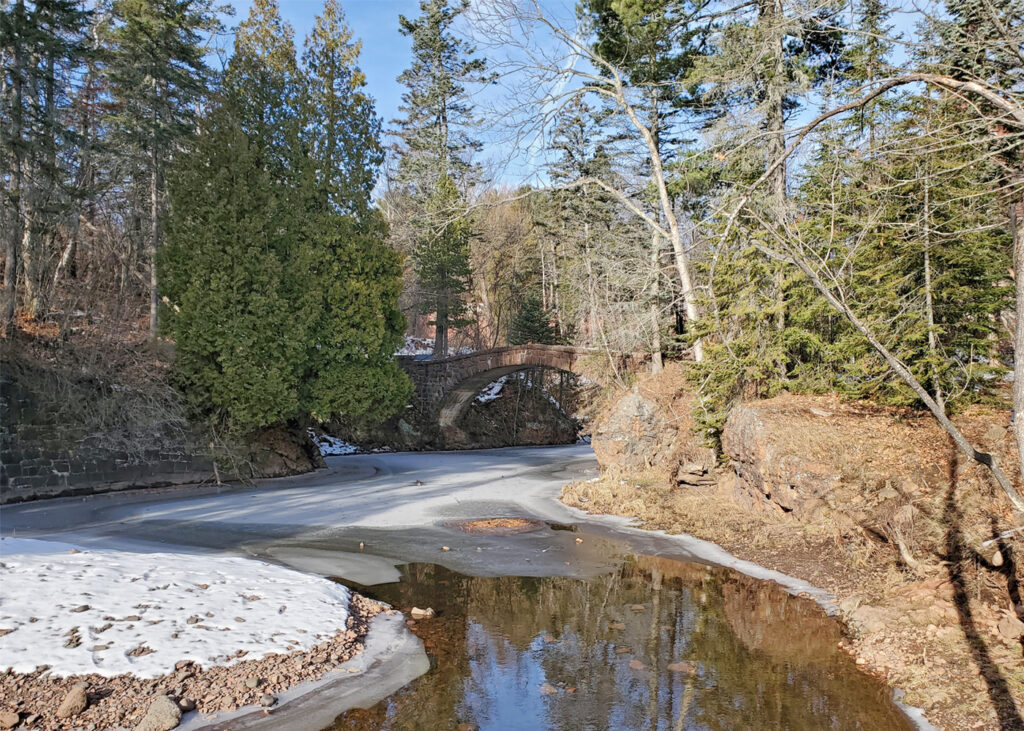
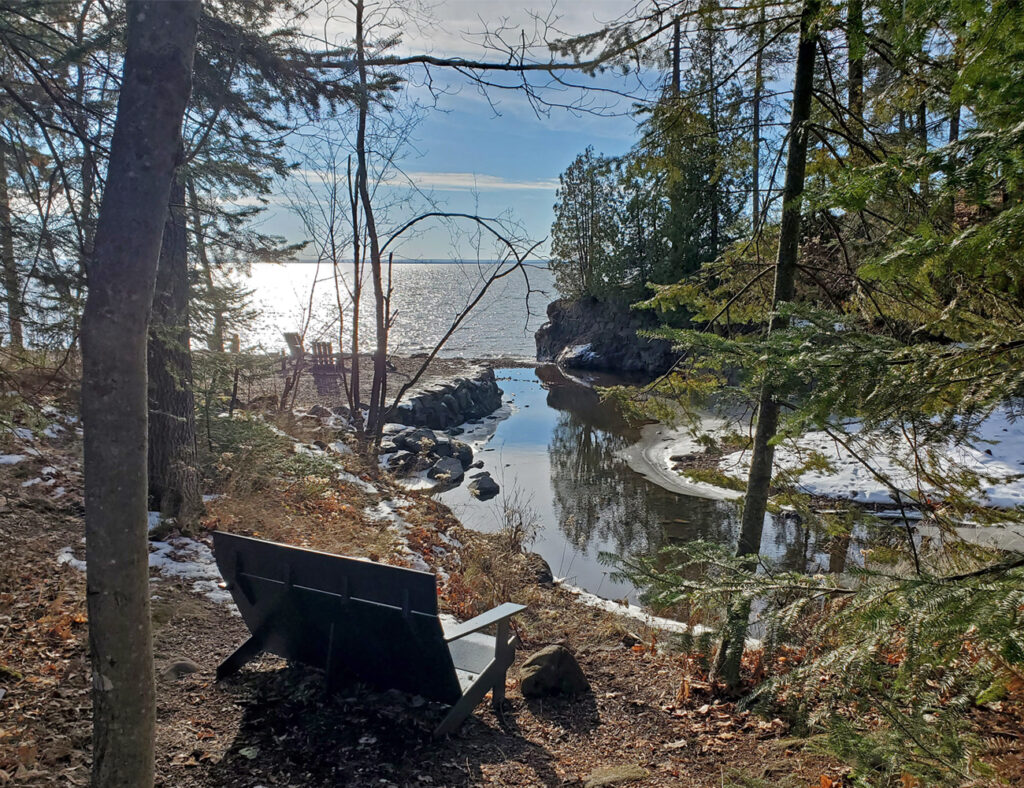
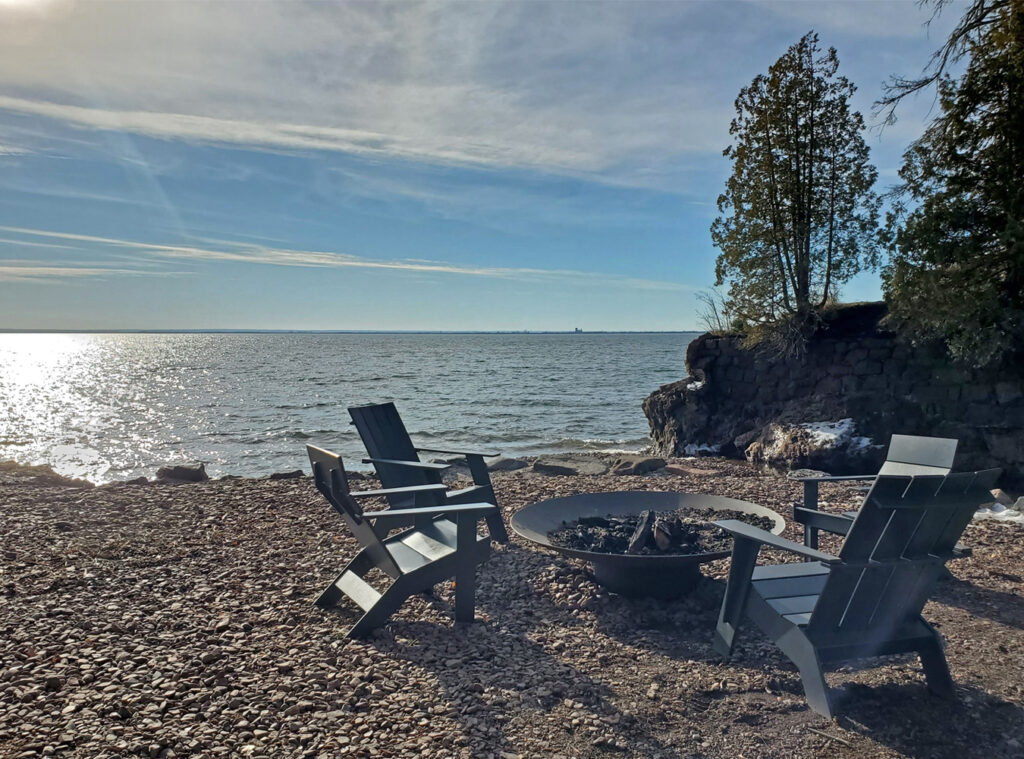
Charming bridges cross the creeks connecting to trails, scenic views, and respites at the lake’s edge.

My kids were good sports while accompanying me on the tour of this historic estate. So naturally they were rewarded with hot chocolate and roasted marshmallows at Bentleyville later that night, which is a must-do experience at this time of year.
